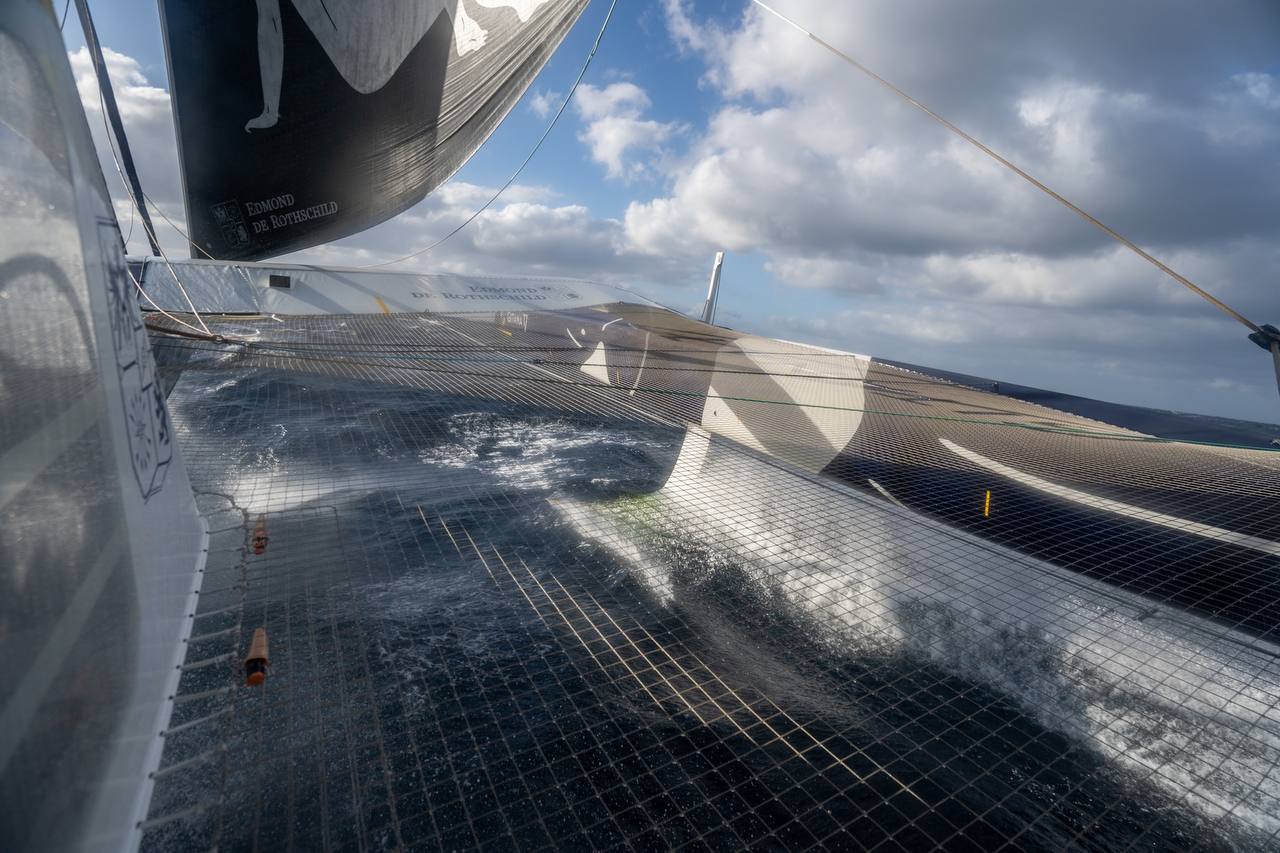

A little over 24 hours out from Ushant, the men of the Maxi Edmond de Rothschild are rolling out the plan drawn up before the start with their router Marcel van Triest to perfection. Following an express exit from the Bay of Biscay of around ten hours or so, ticked off at an average speed of over 30 knots, the first day at sea in this Jules Verne Trophy was dedicated to threading their way along the length of the Iberian peninsula in a bid to gain as much southing as possible. Strong wind and a gybing sequence seven in total since the passage across the line have punctuated the start to the record. This Monday, in the early hours of the second day of this record attempt, the 32-metre giant and his crew were already positioned to the south of Portugal, abeam of Cape St Vincent, the most south-westerly tip of Europe. At the 06:00 UTC position report, Franck Cammas, Charles Caudrelier and their four crew have a lead of nearly a hundred miles in relation to the record.

On Saturday, during a final weather briefing on shore prior to casting off, Franck Cammas pointed out that the first 24 hours of sailing would likely be bracing, especially as they passed Cape Finisterre, at the north-west tip of Spain. Charles Caudrelier described this passage yesterday and Yann Riou also confirmed last night that the area lived up to its reputation: “We’ve linked together a few gybes since departing Ushant. We had a fairly lively passage of Cape Finisterre, where we got pretty shaken about in a messy sea and a sustained breeze. It’s wasn’t ideal for getting the Maxi Edmond de Rothschild to make rapid headway and she was regularly burying her bows in the waves. In fact, I had my own debut flight inside the boat, fortunately without hurting myself. However, for some hours now, we’ve been slipping along much better because the wind has eased a lot and the sea has become flatter. The speeds are increasing as a result.”
Towards milder latitudes
Overnight on Saturday through into Sunday, offshore of the north-west tip of Brittany, whilst they were preparing to cross the start line of the Jules Verne Trophy, the six sailors experienced a few invigorating hours, as was the case in the Bay of Biscay, powered up at an average speed of over 30 knots. Fortunately, with their rapid start to the record and over 640 miles already covered towards the goal in the first 24 hours, there has been an equally rapid improvement in the living conditions aboard the Maxi Edmond de Rothschild: “It was very cold at the start and everyone had their own technique for protecting themselves as best they could. On a personal level, I piled on the layers of fleeces and socks… effectively doubling up on anything that could be, ready to take on the Deep South! The further south we get the warmer the atmosphere will become. You couldn’t say that it’s very warm yet, because all of us still have our hats pulled down over our heads, but the ambiance is gently changing. One by one, we’re removing layers and will likely take off our hats in the coming hours”, admitted Yann Riou this morning.
Since her last gybe, in the early hours of this morning at around 01:30 UTC, to the south of Lisbon, offshore of Comporta to be exact, the Maxi Edmond de Rothschild has begun her long descent to the south-west on starboard tack towards the Portuguese archipelago of Madeira, at an average speed of 34 knots, nicely lined up on her lifting surfaces.